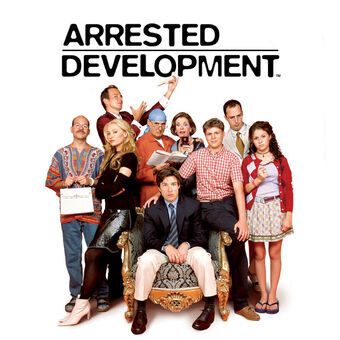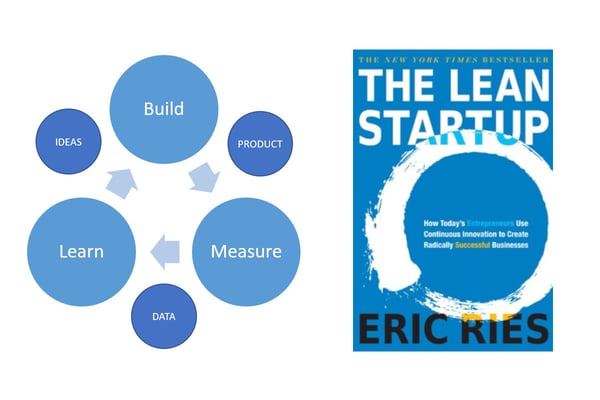It’s one thing to understand, as a concept, the impact of improving workplace culture, and another to actually put practices in place that will drive results. Many companies across the continent know they should launch employee recognition programs, but are stuck in a state of Arrested Development.
These companies are not as dysfunctional as the Bluth family in that fringe pop culture show from 15 years ago, but they suffer from analysis paralysis. They spend so much time deciding what to do, that nothing actually gets done.

Here’s a common scenario:
- Based on engagement survey results or a metric like turnover, it’s evident that the company needs to improve their culture of recognition.
- An HR leader is tasked with coming up with a plan (intentions are good).
- Many months of research for program requirements take place, as they want to get this right.
- The HR leader leaves the company and the project is shelved.
- Based on engagement survey results or a metric like turnover, it’s evident the company still needs to improve their culture of recognition.
You can see how this cycle can continue for a long time before anything gets implemented. Some companies get a bit further, but still make critical mistakes:
- An RFP is sent out to several potential providers.
- The HR leader reviews the submitted proposals, and brings in a committee to further analyze options, which takes months to reach a decision.
- Finally the HR leader signs a multi-year contract with a single provider.
- The provider takes months to integrate all sorts of company systems and train employees on how to use complex features.
- Ultimately, the program fails to deliver on key promises to boost engagement and retention.
- The company is unable to change providers without a large financial penalty, so they stick with a poor solution, knowing it is not working well.
What is Agile HR?
In 2011, American entrepreneur and blogger Eric Ries wrote a book called The Lean Startup. While the book focuses on the benefits for early stage technology companies, this methodology can be applied by enterprise organizations to pilot new initiatives and improve business results.
 What he suggests is to Build-Measure-Learn: Instead of spending months or years burning money, hypothesizing and building out what you believe to be the perfect product or program (which will likely be flawed), rapidly launch a Minimum Viable Product (MVP).
What he suggests is to Build-Measure-Learn: Instead of spending months or years burning money, hypothesizing and building out what you believe to be the perfect product or program (which will likely be flawed), rapidly launch a Minimum Viable Product (MVP).
This MVP is a very scaled back version of a product or program. With tech startups, it’s the basic feature(s), nothing fancy. In HR, it could be a small pilot program like modern milestone awards, or real-time spot awards with a single team, department, or location. The idea is that you launch something fast (which is probably better than the status quo), you learn from it - some things will work, other things won’t - you iterate and improve. When the program is proving effective, roll it out to the full company, gather feedback, measure results and continue to tweak things.
You can then start piloting new programs, like peer-to-peer recognition, that may complement existing employee recognition programs. The idea is that you don’t have to do everything at once. When pilot programs provide proof of concept, roll them out to the whole company. This is Agile HR!
Some of the best companies in the world, many with thousands of employees, apply agile practices across all business functions. The founder of Slack talks about their culture of making 1% improvements. It doesn’t mean these companies aren’t being thoughtful about the initiatives they launch. They’re actually being more thoughtful and deliberate, by rapidly testing ideas and only implementing those that provide solid evidence.
Using Agile HR to Build Recognition Program
So, if your organization suffers from a state of Arrested Development, try to start thinking like a startup. If you’re working on building an employee recognition program, challenge yourself or your people to launch something simple within a month - maybe free trial some software with a single office. Run it for a month, get feedback, measure results, make tweaks, or identify the missing features that would make for a successful program. Then seek out and trial different software that offers those features.
Understand that you will not hit the bull's eye right out of the gate - and that’s okay. Your team leaders will be more engaged when seeing their ideas in action, and more likely to help you build a program that is right for your people. You will learn about what’s working and what isn’t, then adjust. Build-Measure-Learn…. Repeat!
Confused where you should start, and what kind of program can work for your company? Hit the button below to connect with our team, and discuss what might be possible.
What's Next?
Traditional annual performance reviews just don't cut it anymore. Next week we'll go through 5 Reasons You Should Switch to Employee Development Reviews. It will cover the following in detail:
- What are Traditional Annual Performance Reviews
- The Limitations of Annual Performance Reviews
- What Exactly are Employee Development Reviews
- The Benefits of Employee Development Reviews
- How to Implement Employee Development Reviews
Hope you’ll join us for the discussion. Have something you want to learn more about? Let me know in the comments below or connect with me on LinkedIn.
Muucho Guusto,
Joe

















